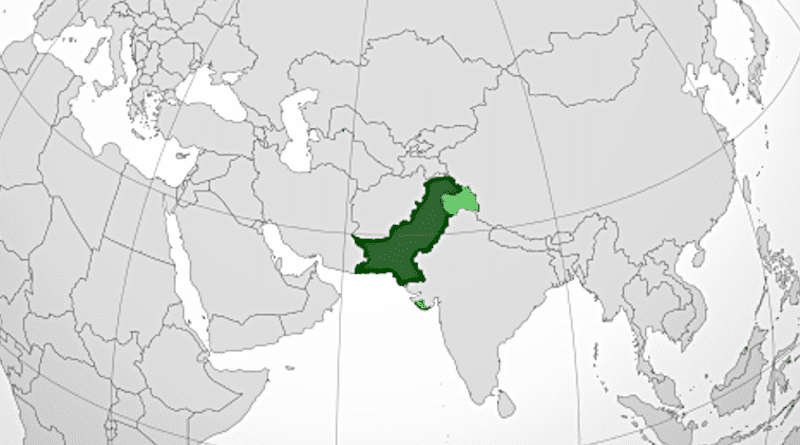Pakistan’s Geographical Location: A Curse Or A Blessing – OpEd
By Saima Afzal
Geography has shaped geopolitics for centuries and it has remained one of the most influential factors contributing to any state’s standing in the world relevance index. A state does not only rely on its geography, its economy. natural resources and population also contribute their part. Pakistan has a unique geostrategic position and shares its border with four states India, Afghanistan, China, and Iran. Pakistan lies in a region that can easily be regarded as the most complicated for regional and global geopolitics. An unfriendly India sitting on the East presents an existential threat, a porous and most difficult border with landlocked Afghanistan on the West, and an occasional issue-ridden border with Iran.
Since its birth, Pakistan has continuously faced an existential threat from India forcing Pakistan to spend on its security impacting national resources and making sometimes un-natural alliances. With three major wars with India and numerous skirmishes/ armed escalations, the breakup of East Pakistan into Bangladesh as a result of the Indian conspiracy proved the initial perception of existential threat a harsh reality. Despite being blessed with natural resources, all the terrains, intelligent and hardworking manpower, enterprising youth, and religiously influenced society, Pakistan has not been able to take off the way it was expected or deserved. All the positives and strengths that Pakistan enjoyed have been exploited in one form or another and transformed into a weakness by hostile states in varying time frames. This effort was supplemented by poor global media perception.
Geo-strategically, Pakistan is considered a gateway to Central Asia that connects the emerging power China to the Muslim world like Afghanistan, Turkmenistan, Uzbekistan, Tajikistan, Iran, and other states through the Arabian Sea. However, Pakistan’s social landscape started to turn sour after the Russian invasion of Afghanistan in 1979. Afghan jihad brought in militancy and madrassa culture giving rise to religious/ ethnic and sectarian frictions. Imperils of Pakistan’s rise are included a complex geostrategic environment, weak economy, governance challenges, dynastic politics, energy shortages, religious and ethnic segregation, extremism and intolerance in segments, and climate change. Unfortunately, military takeovers and mediocre civil leadership, mostly due to external factors denied the consistency and stability the nation needed for progression. The complex geopolitical milieu surrounding Pakistan has made it a critical piece of mosaic in regional and global interests, thus prone to the conspiracy by each external party furthering individuals and policies favoring them.
The existing challenge for Pakistan is to manage balancing ties between US/West and China/Russian camps. Off and on almost all Pakistani leadership clearly stated that it would not ally with any camp. Though, Pakistan’s geostrategic position has brought it closer to China, since it provides the quickest trading route via the Arabian Sea. China’s rise as an economic and regional giant is a reality. The China-Pakistan Economic Corridor (CPEC) is a flagship project of the Belt and Road Initiative (BRI), and the CPEC project has the potential to open new avenues of socio-economic development and employment opportunities not only for Pakistan but also for the region. However, CPEC development brings with it an unwanted hostility cum interest of the West and US while energizing Indian plans against a nuclear Pakistan. Middle Eastern nations also prefer to maintain certain clout over Pakistan, historically using religious funding as a tool.
Despite all negatives, Pakistan has shown extreme resilience and potential par excellence. From producing world-level sportsmen, economic geniuses, noble winners scientists, doctors, diplomats, and artists, maintaining one of the best-armed forces, war aces to becoming the only Muslim nuclear-armed nation is by no means feats to be brushed away. Pakistan has been also actively contributing to international efforts for strengthening global norms on arms control, non-proliferation, and disarmament and follows the latest international standards on export controls, nuclear safety, and security at the national level. It is also the largest contributor of troops to the UN assisting in its mandate of global peace; so far more than 200,000 Pakistani soldiers have participated in 60 missions in 28 countries. Being Pakistan is not easy, not many nations in the world have the will to survive in such a hostile, complex, and fluid canvas which is mostly triggered externally. Pakistan has successfully defeated terrorism and restored peace in the country; the country paid price in blood and treasure; however, it depicts Pakistan’s resilience and commitment to peace. The geographical location, hence, has played its role, both as a curse and as a blessing, at times, but despite that, Pakistan needs to redefine its stance and focused more on its nation-building.
* The writer is an Islamabad Analyst and her expertise is South Asia, Indo-Pacific and security and can be contacted at [email protected].


The factor of geographical location is meaningless unless the nation and its leader realise its importance. Even today, CPEC is good initiative but still maximum benefit is for Chinese companies. Pakistan may continue to suffer unless it is understood that “ “The society that separates its scholars from its warriors will have its thinking done by cowards and its fighting by fools.” — Thucydides.